If you read our 2022-2023 Annual Report, you may have seen a notice about a new community engagement event in place of our previous program, Plan for Your Land, where Marion County landowners could learn how to create a conservation plan for their land. In 2023, we said goodbye to Plan for Your Land, and welcomed a new program offered by the district. The new program is Conservation Club, and it’s not as exclusive as it sounds. It’s open to anyone and everyone who is interested in participating in conservation!
On May 31st, Marion SWCD hosted one of the first Conservation Club events in person called the Oak and Prairie Tour for anyone to attend and learn about projects and management styles for three different habitat types: Oregon White Oak woodlands in wetland prairies, Oregon White Oak establishment on a private landowner’s property, and prairie restoration. All these habitats are critically important in that they host a huge diversity of wildlife and provide many benefits to the natural ecosystem and humans alike. We want to teach residents of Marion County about these three ecosystems because these declining habitats are part of what makes this county so beautiful and unique.
The tour began at Gaia Conservation Lot owned by the City of Salem. This site was a previously privately owned lot that had been restored from a state of overcrowded invasive vegetation including reed canary grass and Himalayan blackberry, to an oak woodland thriving with native species established along a riparian zone. Jesse Dillow, former Natural Infrastructure Specialist, and Luke Westphal, Urban Streamside Program Coordinator, from the City of Salem Public Works lead the group on a walk through the oak woodland. As we walked, we learned about the challenges, surprises, and successes that all contributed to the restoration of this property with a project partially funded by a Landowner Assistance Program grant through Marion SWCD. What was once an unmanaged woodland with blackberry thickets taller than a person’s head and reed canary grass so thick you couldn’t see the stream, is now wildlife habitat thriving with native forbs, shrubs, and trees.
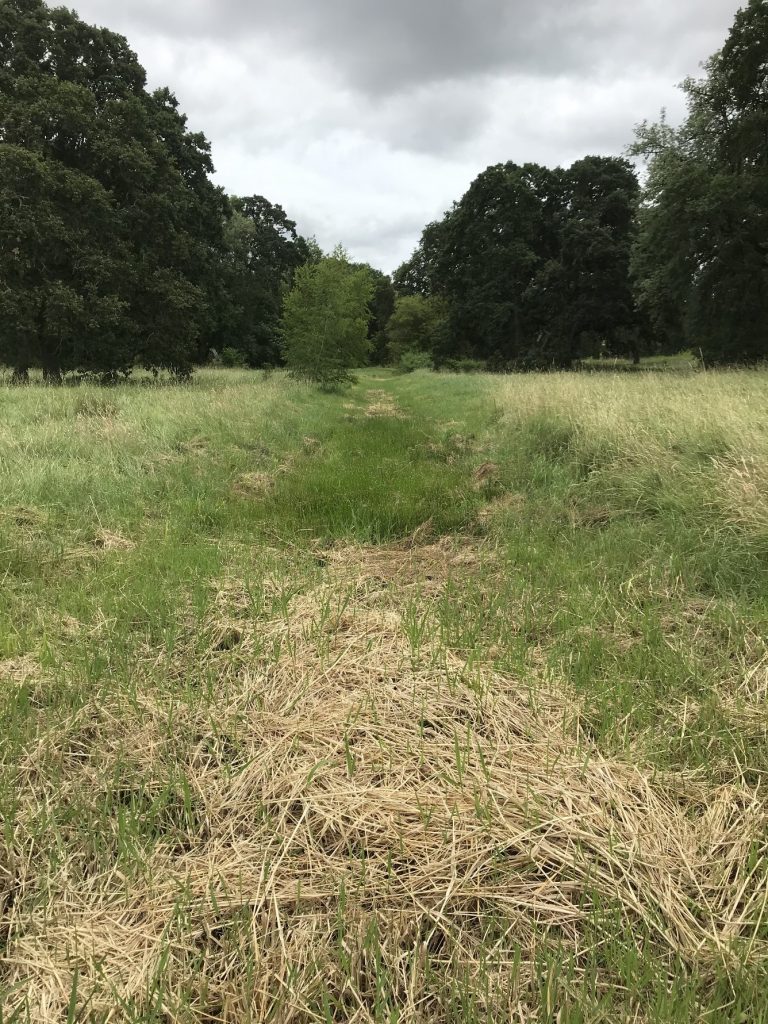
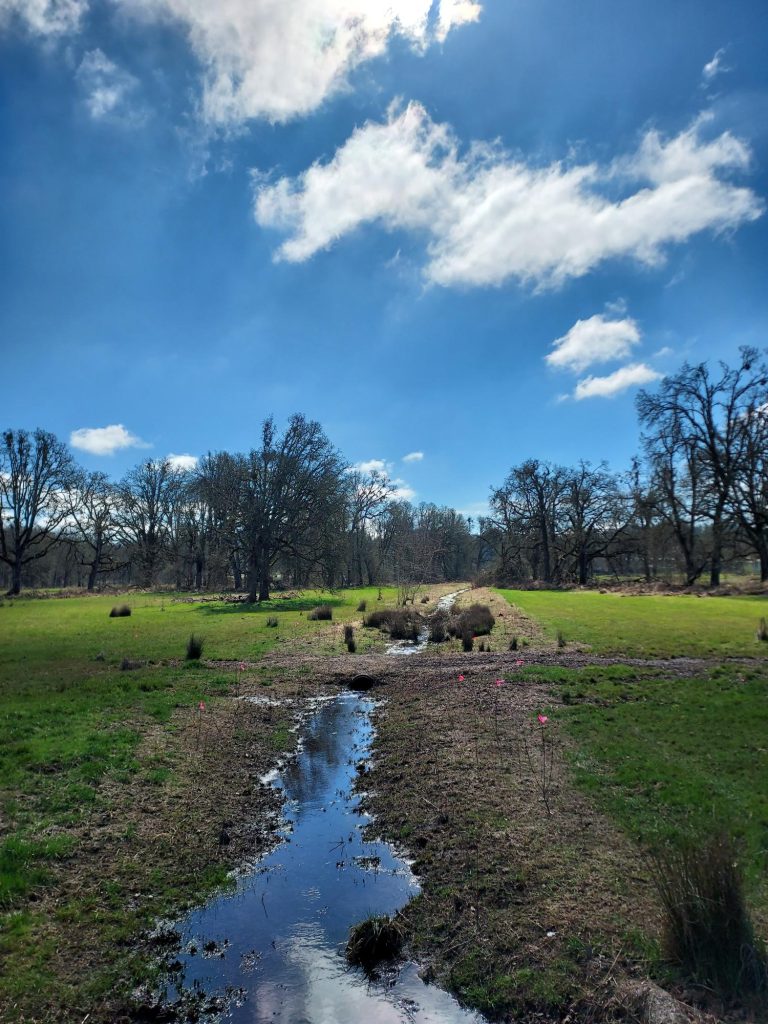
We then ventured on to our second tour stop at Kurt Berning’s family property in Mt. Angel, where he was inspired to restore his family’s fallow grass seed fields into an Oak woodland after attending our Plan for Your Land courses and learning about the decline of oak habitats in the Valley. With the help of their close friends, Kurt and his wife Katie planted hundreds of Oregon White Oak on the family farm to improve habitat for countless wildlife species. Kurt’s story was an inspiration for guests to hear about the challenges of managing a young oak stand, as many of these residents have or are interested in starting similar projects on their own properties. This created a sense of community around those who value the efforts of establishing habitat for wildlife that is supported by oak trees.
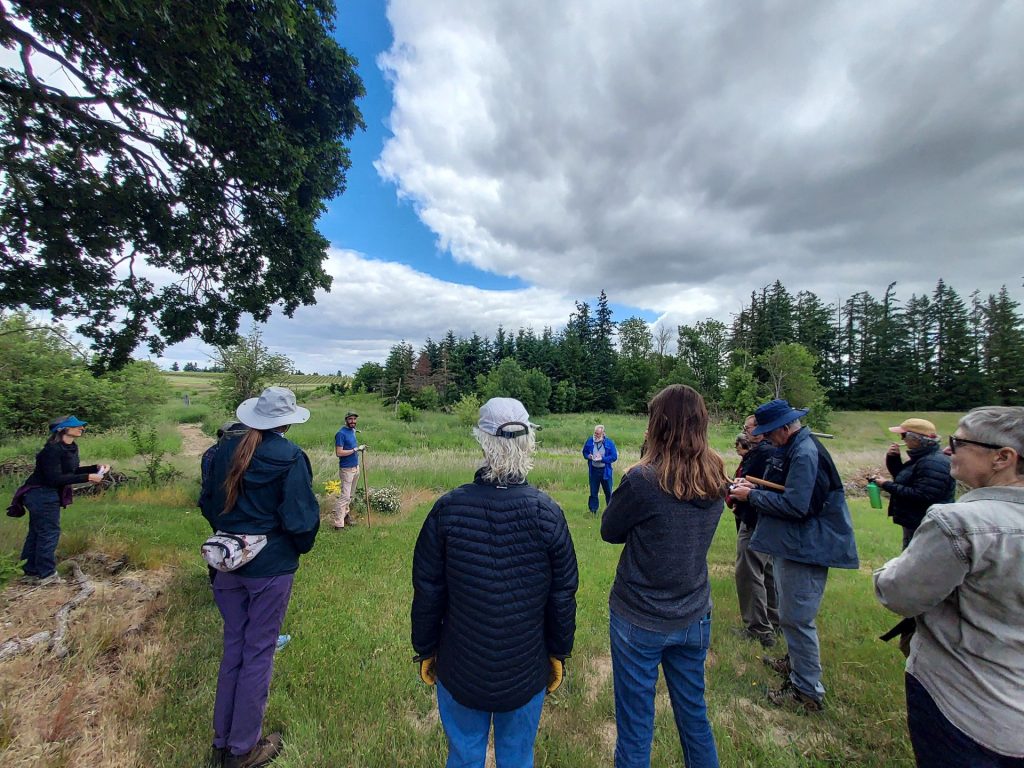
For our third and final stop of the tour, we went to the oak grove at Champoeg State Park where we ate lunch and walked a prairie restoration site just past the disc golf parking lot. This site has been managed by the constituents at the state park, Jeremy Ojua with Confederated Tribes of Grand Ronde, and ecologist Sara Alaica at Institute for Applied Ecology. Here, we learned about the challenges of how to control invasive weeds in an open prairie and the significance of the plant species and management methods that have been used in prairies by Indigenous tribes for thousands of years. Historically, the Willamette Valley was dominated by prairies and controlled by frequent low intensity fires, conducted by the Indigenous tribes, creating a symbiotic relationship between humans and prairie ecosystems. The fires provided weed control and a healthy balance of a disturbance regime, which these habitats thrive on. The Tribes were able to use the plant species that would emerge after a fire for food. Now that fire suppression has been enforced on these lands, invasive species have overtaken almost all prairies, and the management of invasive species in these habitats is much more difficult. Walking through this prairie, we saw bumble bees, butterflies, and even a cinnabar moth, a biological control for tansy ragwort busy at work.
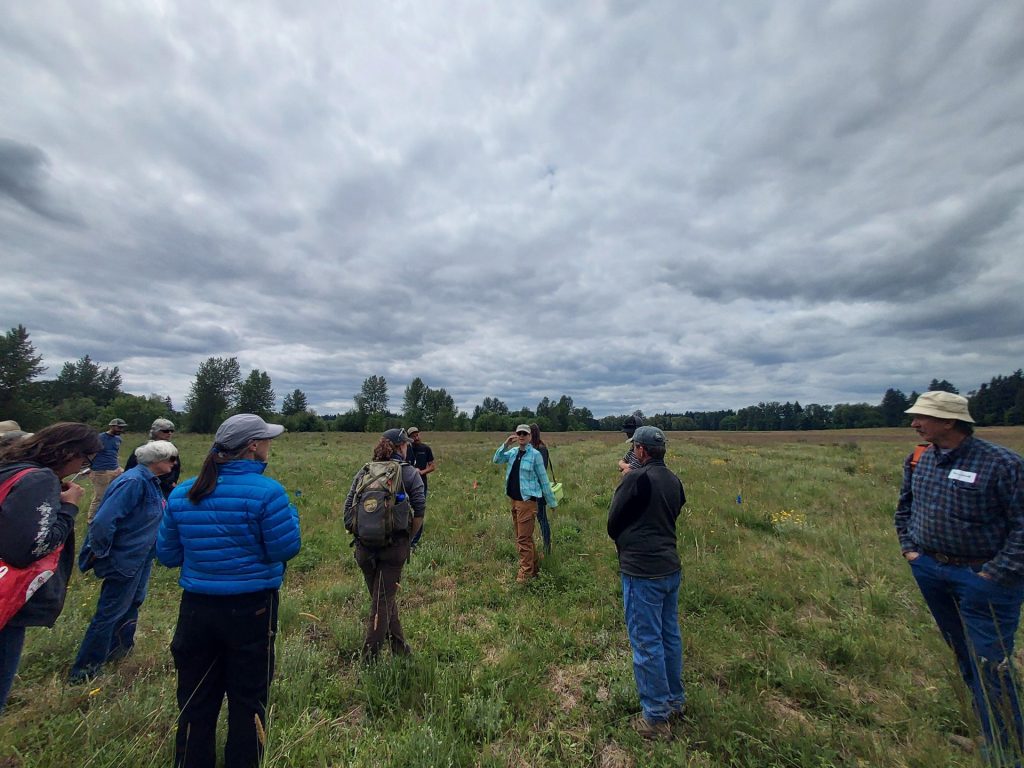
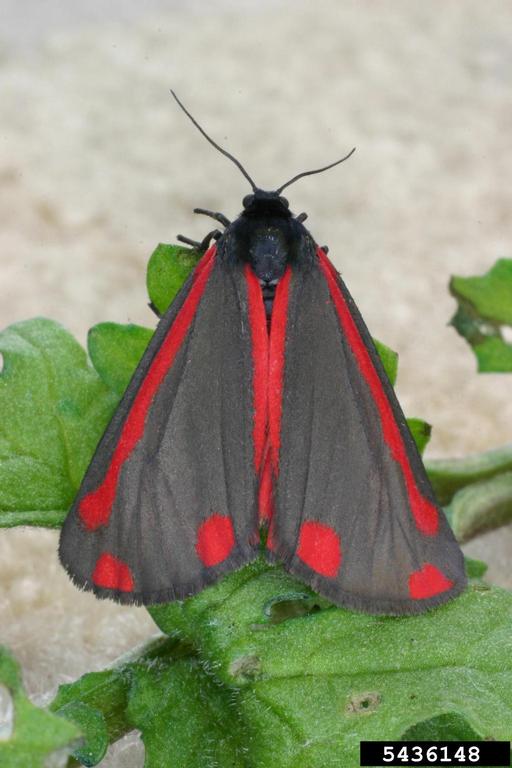
We spent this beautiful spring day all over Marion County, learning about conservation methods, wildlife habitat, and history of the Oregon white oaks and prairies in the Willamette Valley. In total, there were about thirty attendees of the tour, six partners leading talks to educate the group, and three tour sites within Marion County.
We are excited to continue hosting Conservation Club events for folks interested in conservation in all forms, for years to come. We are also excited to be focusing our efforts on more oak habitat restoration projects, as our county is in the heart of the critically endangered oak habitats that are rapidly declining. If you or someone you know has Oregon white oak on their property and wants to learn about how to manage these types of habitats for conservation of wildlife, please feel free to reach out to the District and we would love to assist you.
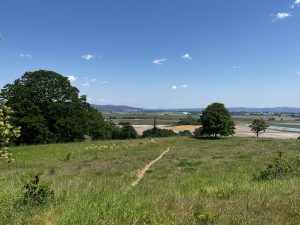
Additional Resources
Partners:
Confederated Tribes of Grand Ronde
Additional information about oak habitats:
About the Author
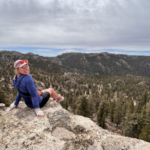
My passion for conservation is rooted in my experiences growing up camping and backpacking every summer since I was young. My favorite activities always involve being outside, whether I am hiking, snowboarding, or biking, I love to explore as much natural beauty as possible. I help Marion County residents improve the health and productivity of their land as the Conservation Planner for natural areas.
